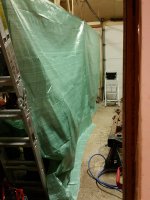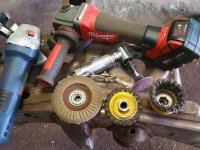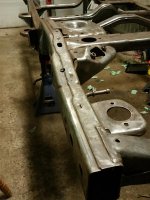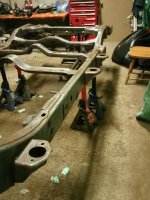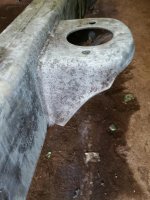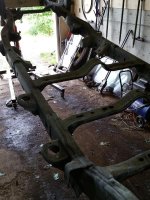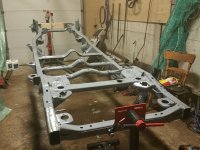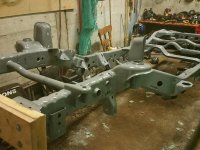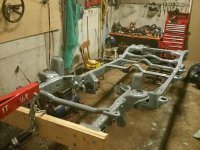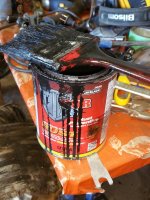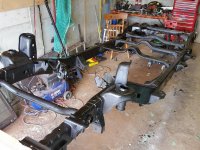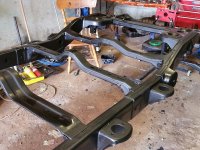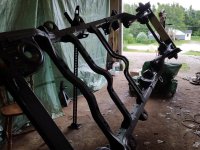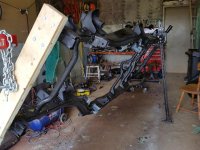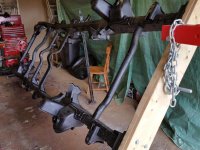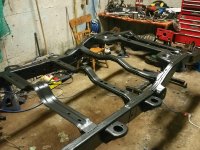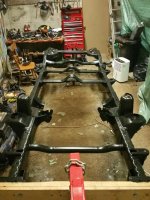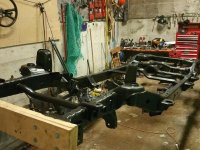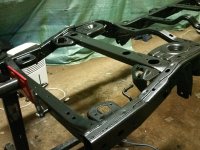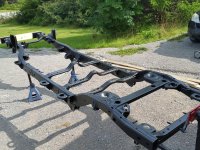Big Bad Wolf
New member
Part 4 - Removal of engine/tranny and components.
At this point it's time to strip what is left.
First was the exhaust system. The bolts holding the pipes to the manifolds were seized BAD, I had to cut them off. During the cutting I glazed a manifold and put a slight hole in it :grayno: I will have to fill the hole or purchase a set of aftermarket manifolds. I do plan on doing an engine swap but I may put some wear on my V6 first. Where I live would be hard to sell it so I might as well use it. It's a set of 60's or an engine swap.. In my mind 60's come first.
Second was the engine. I decided to leave the transmission attached but my hoist would not go high enough to clear so I had to muscle the tranny over. My hoist is a pain because the front wheels do not rotate so maneuvering was insane. If I had a larger work area it would be no big deal but when you back over a concrete lip with that much weight pushing it back over is not fun.
The rest I didn't take photos of, I just got carried away with work vs taking pictures. I will try to add further photos.
My fuel tank was half full so it was heavy. I decided to use two ratchet straps for safety and used a motorcycle lift to take the weight and role it out. I will note I HAD to get someone to help carry the tank out of the garage.
The steering box was removed and getting the drag link off the pitman arm was a PITA. I would not suggest heat here as it could travel to the box. In my case using a pickle fork did the job.
I used jack stands the whole time but had planned to create a swivel so I could rotate the frame to work on it. At one end I used an engine stand and the other I used wood to mount on with a hole with a sleeved bolt that could rotate.
Having ran out of oxygen for my torch I broke a couple rear sway bar bolts and one cross member bolt. I drilled them and used an easy out. Of course during the process I had drill bits breaking inside the bolt and even a broken easy out. I knew this could happen so I made sure to drill all the way through the bolt so I could access the hole from the top in case of an issue.
For reference there are nuts welded inside the frame for the bolts. From here I drilled a small hole in the top of the chassis above the lower bolt I had drilled through. I used a thin punch to slip down and knock the obstructions out of the bolt. It worked! PITA! SERIOUS LESSON here, don't get impatient and make sure to use a torch. This was my fault.
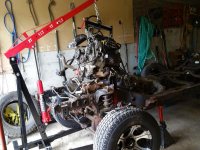
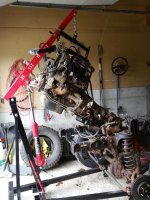
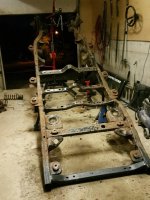
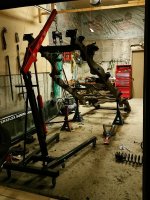
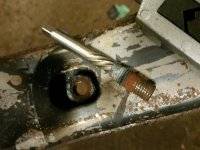
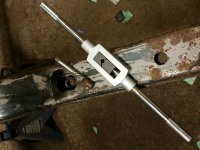
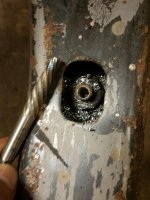
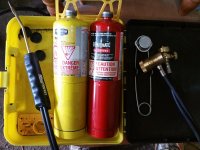
More photos to come here.
At this point it's time to strip what is left.
First was the exhaust system. The bolts holding the pipes to the manifolds were seized BAD, I had to cut them off. During the cutting I glazed a manifold and put a slight hole in it :grayno: I will have to fill the hole or purchase a set of aftermarket manifolds. I do plan on doing an engine swap but I may put some wear on my V6 first. Where I live would be hard to sell it so I might as well use it. It's a set of 60's or an engine swap.. In my mind 60's come first.
Second was the engine. I decided to leave the transmission attached but my hoist would not go high enough to clear so I had to muscle the tranny over. My hoist is a pain because the front wheels do not rotate so maneuvering was insane. If I had a larger work area it would be no big deal but when you back over a concrete lip with that much weight pushing it back over is not fun.
The rest I didn't take photos of, I just got carried away with work vs taking pictures. I will try to add further photos.
My fuel tank was half full so it was heavy. I decided to use two ratchet straps for safety and used a motorcycle lift to take the weight and role it out. I will note I HAD to get someone to help carry the tank out of the garage.
The steering box was removed and getting the drag link off the pitman arm was a PITA. I would not suggest heat here as it could travel to the box. In my case using a pickle fork did the job.
I used jack stands the whole time but had planned to create a swivel so I could rotate the frame to work on it. At one end I used an engine stand and the other I used wood to mount on with a hole with a sleeved bolt that could rotate.
Having ran out of oxygen for my torch I broke a couple rear sway bar bolts and one cross member bolt. I drilled them and used an easy out. Of course during the process I had drill bits breaking inside the bolt and even a broken easy out. I knew this could happen so I made sure to drill all the way through the bolt so I could access the hole from the top in case of an issue.
For reference there are nuts welded inside the frame for the bolts. From here I drilled a small hole in the top of the chassis above the lower bolt I had drilled through. I used a thin punch to slip down and knock the obstructions out of the bolt. It worked! PITA! SERIOUS LESSON here, don't get impatient and make sure to use a torch. This was my fault.








More photos to come here.
Last edited:

